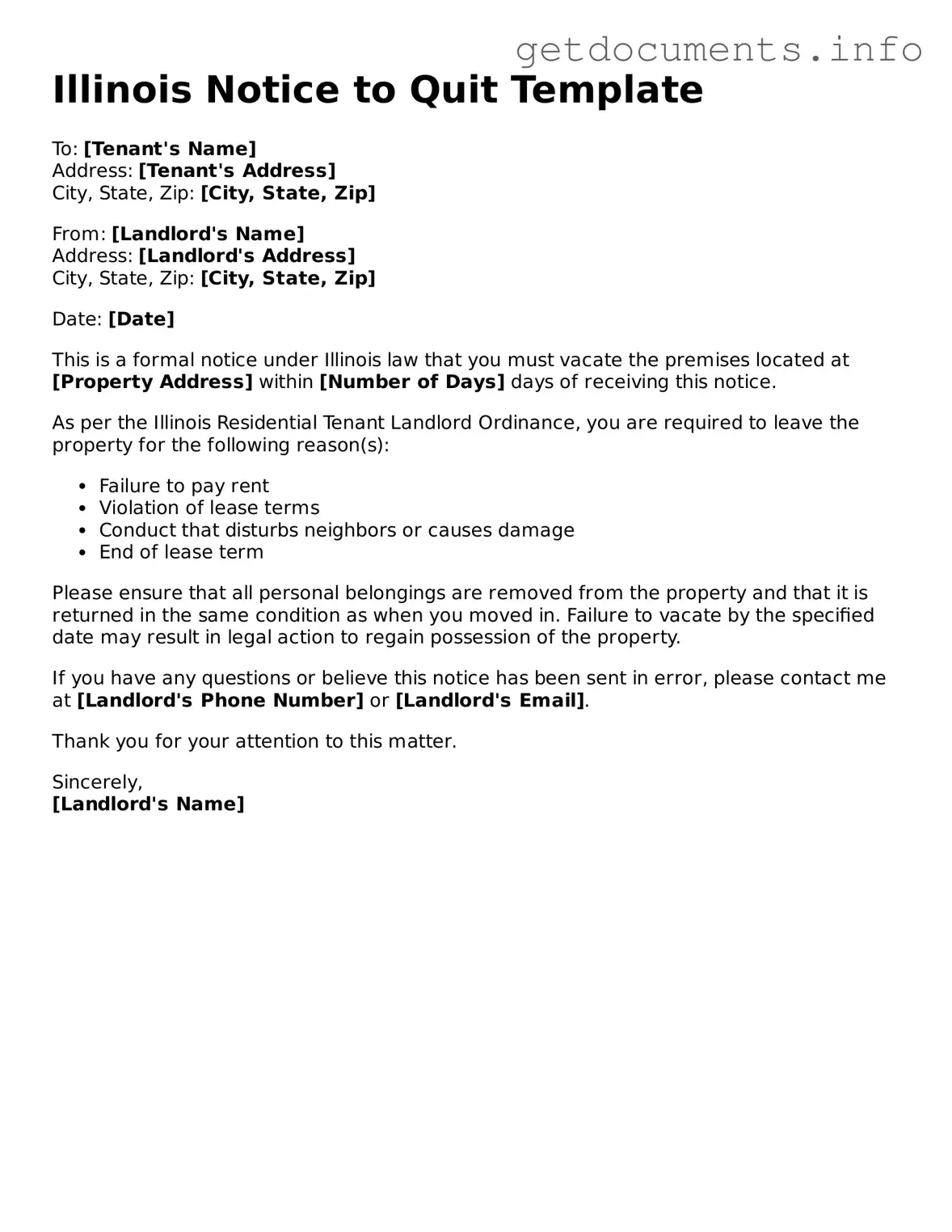In Illinois, the Notice to Quit form serves as a crucial tool for landlords and tenants navigating the often complex landscape of rental agreements. This document is typically used when a landlord needs to inform a tenant that they must vacate the rental property, usually due to non-payment of rent or violation of lease terms. The form outlines essential details, including the reason for the eviction, the timeframe in which the tenant must leave, and any applicable state laws that govern the eviction process. It’s important to note that this notice is not an eviction order; rather, it is a formal request that initiates the process. Understanding the requirements and implications of the Notice to Quit is vital for both landlords seeking to reclaim their property and tenants who wish to protect their rights. By adhering to the proper procedures and timelines outlined in the form, both parties can ensure a smoother transition, whether that means moving forward with the eviction process or resolving the issues at hand amicably.
